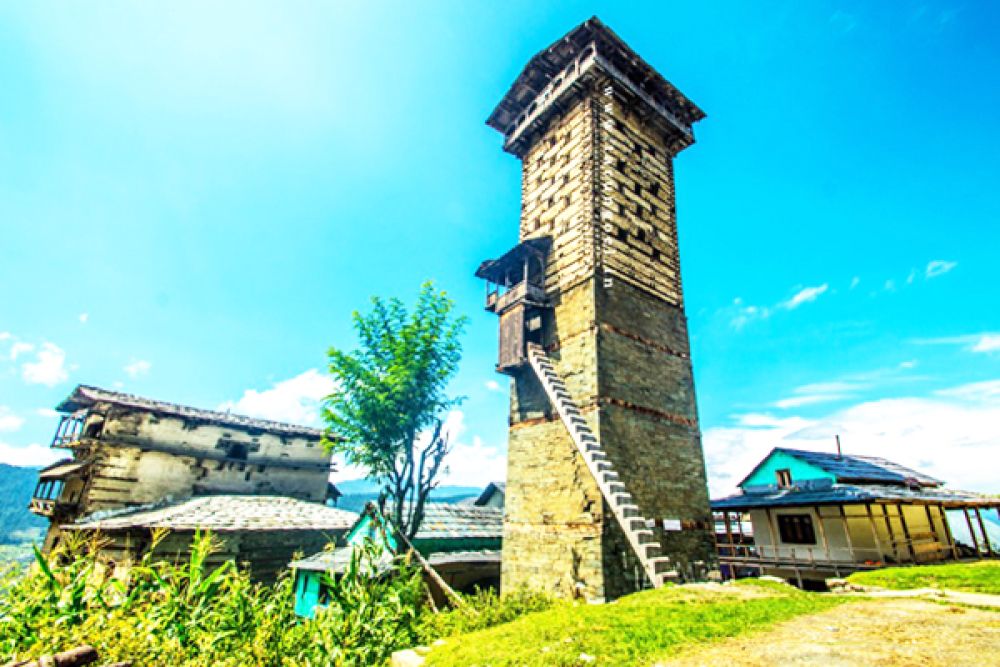

Chehni Kothi is an alluring historical structure located in Tirthan Valley, a picturesque region within the Kullu district of Himachal Pradesh, India. Historically, the tower-like edifice dates back to around the 17th century and was originally built as a fortified residence for the local king, Raja Rana Dhadhia.
The name of the place, Chehni Kothi, is a derivative of the village where it stands—Chehni. The word 'Kothi' translates to 'mansion' or 'fortress' in the local dialect. The traditional construction is a stunning example of the indigenous Kath-Kuni architecture, which employs interlocked stones and wood without the use of cement.
The aspect of tourism in Tirthan Valley, and particularly in Chehni Kothi, began to emerge as part of the broader search for offbeat and experiential travel. The tower's imposing structure and rich history became points of interest for travelers looking for authenticity and untouched beauty. As a result, Chehni Kothi gradually turned into a significant tourist attraction as word of mouth about its existence spread among adventure enthusiasts and cultural connoisseurs.
The area surrounding Chehni Kothi is also known for its beautiful landscape, comprising lush forests, alpine meadows, and the pristine Tirthan River. It offers a mix of activities like fishing, trekking, and exploring the rich biodiversity of the region, which began to draw nature lovers and trekkers, further cementing its place as a popular tourist destination.
Today, tourists visiting Chehni Kothi can witness a harmonious blend of nature and culture. The latest trends in tourism in the region revolve around sustainable and responsible travel. With an increasing global awareness about preserving natural and cultural heritage, tourists are more inclined towards leaving minimal environmental footprints and engaging with the local community in a respectful and supportive manner.
The growing interest in homestays and local experiences has led to a rise in community-based tourism. Visitors prefer staying with local families, enjoying the traditional home-cooked cuisine, and experiencing the day-to-day life of the Tirthan Valley residents. This not only provides an authentic insight into the region’s culture but also contributes to the local economy.
Adventure tourism is also gaining popularity. Treks to the Great Himalayan National Park, a UNESCO World Heritage site not far from Chehni Kothi, and activities like river crossing, rock climbing, and rappelling are becoming common pursuits for visitors.
Looking ahead, there is a conscious effort from various stakeholders including tourists, local residents, and government bodies, to promote eco-tourism and preserve the cultural landmarks like Chehni Kothi. The goal is to ensure that tourism development is sustainable and does not disrupt the indigenous character and natural beauty of Tirthan Valley.